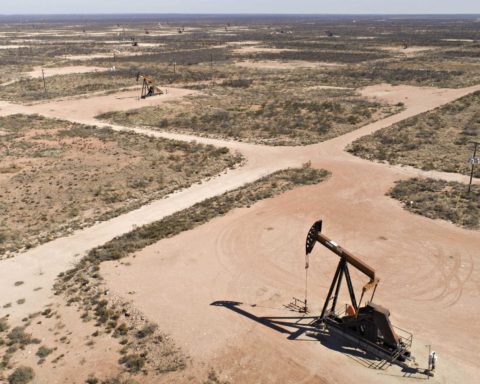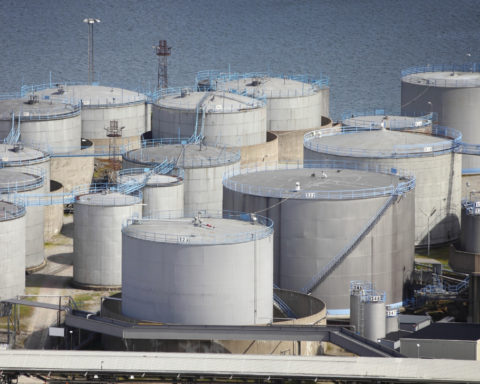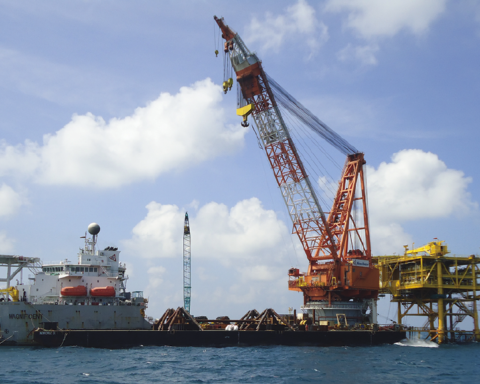Anna GERASIMOVA
Project Director, AC TEK REA Ministry of Energy of the Russian Federation
e-mail: agerasimova@nes.ru
Despite the fact that one may observe an increase in energy prices and a recovery in demand from a number of large economies even now, the consequences of the coronavirus pandemic risk changing the global oil market well beyond the 2020 horizon. These changes may not be as obvious as they seem at first glance. Possible pathways of the market transformation are reflected below in the answers to four controversial questions about the present and future of world power industry.
Question 1: Will the oil market fully recover after the end of the pandemic?
The first half of summer 2020 brought a long-awaited positive mood to the oil market. Positive results of testing a vaccine against coronavirus, a recovery in consumption in China, a decrease in physical supplies by OPEC + countries in accordance with their obligations – all this gave investors confidence in the imminent end of the energy (or at least oil) crisis. Having easily crossed the $40 mark per barrel, oil quotes have been showing a predominant growth since the beginning of May. This gives confidence that world reserves will still not reach the “critical mass” of complete filling of storage facilities.
Of course, at the moment there is still uncertainty about the pace of recovery in the oil products market. In early July, the number of coronavirus diseases in the United States reached a new high of almost 60 thousand cases, which gave reason to speculations about the possibility of a second wave of the epidemic this year. Investors’ expectations of re-introduction of restrictive measures in the United States may lead not only to a slowdown in the recovery of demand for the largest consumer of petroleum products in the world, but also to a smoother exit of other countries from quarantine. And even after the restrictions are lifted, the recovery of consumer activity will not be instantaneous. Until the risks of infection are reduced to minimal levels – and this will probably not happen before the mass market launch of the coronavirus vaccine – consumers will try to avoid flights and travel by public transport.

Most analysts offer similar predictions for the level of demand for energy carriers after the economic recovery from the crisis (usually dated to 2021–2022): at a level more or less corresponding to the indicator of 2019 or even slightly higher. Almost no one dares to assume that consumer behavior will change significantly under the influence of the prolonged quarantine. Moreover, no one undertakes to assess the effect of these changes yet.
The most cited potential risks of lower consumption are an increase in the number of people working remotely, a decrease in work travel and an accelerated growth in online services and entertainment. From the point of view of individual consumer, this thesis seems quite plausible. But for this to have any significant effect, a simultaneous change in the preferences of most people of one social group is required (for example, the transition of all or part of the team to remote work). The change in consumption trends caused by the coronavirus was not a deliberate choice of preferences, but was imposed by political will – and this makes it highly volatile in the future. Any significant technological breakthrough is much more likely to reduce the demand for petroleum products than the consequences of the coronavirus.
The more obvious threat to the oil market in the medium term is the possibility of a slowdown in the global economy or even a prolonged recession due to the damage caused by the coronavirus. The growth in the consumption of petroleum products has historically established itself as a very stable and rather predictable parameter, which is largely confirmed by the influence of the growth rates of world economies and household incomes. Therefore, the forecasts of the US Congressional Budget Office, according to which the country’s GDP will enter the pre-crisis trajectory of growth not earlier than 10 years from now [1], do not inspire any confidence in a quick return to the pre-crisis oil demand.
Therefore, the main factor of uncertainty that can significantly affect the rate of recovery in oil demand in different countries and regions of the world is the ability of states to continue stimulating the economy to the extent necessary to stabilize the financial condition of business, restore business activity and the labor market. At the same time, another question arises: will equal support be provided for all energy sectors or will green investments be a priority?
Question 2: Can the current crisis in the oil market affect the process of the global energy transition?
Many world agencies, including the IEA, started writing in the spring that the current crisis created a great risk of slowing down the pace of the Energy Transition [2]. It was noted that the growth of installed capacities based on renewable energy sources, is first of all hampered by quarantine measures that create disruptions in supply chains. Falling prices for traditional energy resources, including gas, can also have a negative impact on the investment attractiveness of projects in the field of renewable energy. According to IHS Markit forecasts, solar panel installations in 2020 will decline – for the first time in 10 years – by 16% from last year level [3]. The dynamics of installing new wind turbines may be similar in case of delays in commissioning projects in the USA, Europe and China with a total capacity of about 20 GW.
At the same time, the positioning of renewable sources relative to other energy resources during the crisis was excellent: when the demand for traditional resources fell in the first quarter, the consumption of renewable energy increased by 1.5% compared to the same period last year [4]. Of course, the low operating costs of already implemented projects on renewable energy sources, the minimal involvement of human resources in maintaining their work and the distributed structure of generation played a role here. Nevertheless, this could be another proof of the success of the RES model. As for the future dynamics, the negative effect of the coronavirus on green energy is also easy to minimize: if most countries follow Germany’s example and abolish fines for violating the terms of construction contracts, the commissioning of renewable energy facilities planned for 2020 will be postponed to 2021–2022 in full.
We can say that the main danger for green energy is the suspension of new auctions and the shift of government interests from the environmental agenda to overcoming the economic crisis caused by the consequences of the coronavirus. As far as we can assess the current actions of regulators, such a trend is more typical for developing countries and regions, whose economic growth at this stage is critically dependent on the creation of new infrastructure and support for industry. It should be noted that for most of these economies – with the exception of China – the pre-crisis decarbonization plans were initially more point-like than systematic.
Equally, everything written above could be attributed to the United States. The policy pursued by Donald Trump is not least aimed at supporting producers of traditional energy resources and stimulating, among other things, oil and gas infrastructure. However, recent protests and further court orders to shut down North Dakota’s largest oil pipeline (Dakota Access) indicate that there is an environmental agenda outside of California in the United States. Given the active campaigning by the Democratic Party for a green revolution, the outcome of the presidential election could determine a new energy course for the world’s largest economy.
The countries of the European Union are ready to take a completely different path of economic recovery from the consequences of the coronavirus. The economic downturn caused by restrictive measures and the need for an active stimulating fiscal policy have led to the fact that the state will be a key investor in its own economy in the near future. In order to set sail on the chosen course for decarbonization within the timeframe stipulated, the regulator must select the projects both most effective in terms of financial results and environmentally neutral, as well as projects of great social significance for a potential Energy Transition. In other words, the transition to clean energy could be a key project in the economic recovery strategies of the countries so that they can achieve their ambitious decarbonization plans.
Rystad Energy analysts also adhere to the point of view about the acceleration of energy transition processes against the background of the coronavirus epidemic [5, 6]. True, they proceed from an alternative reason – the rise in prices for traditional energy resources. In their opinion, the lack of supply on the market in 3–5 years will lead to an increase in oil prices to $68 per barrel. This in turn will accelerate the transition to renewable energy and spark a boom in electric vehicle sales. This claim is controversial because the current motor fuel prices affect EV sales less significantly than the government subsidy policies or lithium-ion battery prices. Despite this, the very possibility of accelerating the replacement of traditional fuels with alternative ones as a consequence of the coronavirus in the long term looks quite realistic.

Question 3: Where will the energy business invest in the post-COVID era?
The main threat of EU policy for the oil and gas industry is also that the acceleration of the Energy Transition will not be limited to just the European region. First, implementing energy projects aimed at combating climate change can increase the rate of introduction of new “green” technologies on an industrial scale, which, in turn, will lead to a decrease in their cost and increase in availability. With more affordable technologies to reduce emissions, the competitiveness of traditional resources will decline in the rest of the world, and private investment will increasingly flow into the green sector. Already today, oil and gas majors, led by BP, are beginning to recognize these trends and expand their presence in the renewable energy industry, mastering technologies to reduce greenhouse gas emissions.
Secondly, the internal environmental policy of the region has every chance to cease to be internal in the event of adopting the draft law on import duties on goods that do not comply with EU environmental standards. The most vulnerable position will be that of the exporters of crude hydrocarbons and products, who will have to choose between introducing their own carbon pricing systems and paying customs duties in favor of the European Union. At the same time, regardless of the option chosen by the country, the investment attractiveness of its oil and gas sector decreases.
It should be understood that the Energy Transition does not mean a complete rejection of the use of hydrocarbon fuels. Half of the current greenhouse gas emissions, according to estimates by Goldman Sachs investment bank, can be more effectively eliminated not by switching to “clean” alternative sources of energy, but simply by using carbon capture and storage (CCS) technologies. This opens up significant room for maneuver by oil industry, but only if it undergoes significant transformation in the coming years.
At the moment, only 10 countries have direct references to CCS technology in their emission reduction programs under the Paris Agreement (with half of these countries being OPEC members). Of course, we should expect an increase in the number of such countries, especially among the large oil and gas producers.
It should be borne in mind that the current crisis would have hit investments in the oil and gas sector without the help of the EU policy. This is not so much about the lack of investment in 2020, caused by the weakened financial condition of the sector. The crisis has shown once again that the oil sector today is not able to provide returns comparable to the level of risk. Even after the end of the period of low oil prices, their volatility will still remain high, which, coupled with the risk of repeated negative shocks, will lead to a significant increase in yields that capital owners will demand from new projects. As a result, the oil and gas sector risks losing investment well beyond the 2020 horizon.
Question 4: What other global structural changes await oil producers?
Companies with high operating costs and high debt burdens were hit the hardest by the crisis. Among the companies in the oil sector, US shale producers turned out to be more vulnerable, as well as companies producing at complex assets with high production costs (primarily in Canada, and in new production regions such as Argentina and Guyana). Oilfield service companies were seriously damaged. Schlumberger has lost half of its shareholder value since January 2020, and other market players have shown similar dynamics. This is not surprising: the number of active drilling rigs in North America fell by 70% over the year, and a similar decline is expected for the order book of service companies.
The emerging wave of bankruptcies of American shale companies testifies to the problems with debt payments and attracting new capital: in the first half of the year, their number is already more than two dozen [7], but, according to analysts, may increase to 100 by the end of the year [8]. In general, bankruptcy processes are aimed at restructuring the debt of companies and should not greatly affect their operating activities. Considering also the small size of these companies, one can hardly expect a direct impact of bankruptcies on the level of shale production, but they may be the first call for a more global “reform” of the industry.
The oil market in most countries has a low degree of fragmentation: it is characterized by a high concentration of large companies, and the aggregate share of small producers in production is rather low. For example, in Russia more than 80% of production comes from only 5 companies, in many countries national oil companies provide more than 90% of oil production. The fragmentation of the US shale market is not only relatively high, but has continued to grow over the past 10 years. This circumstance leads to a reduced resilience of the sector to external shocks, in particular, to a decrease in oil prices. Large companies in a crisis, as a rule, have a more tangible monetary “safety cushion” and more opportunities to raise capital. They are better at hedging risks and have a stronger negotiating position. It is therefore likely that the current crisis will trigger consolidation of the US oil industry, with more resilient companies with ample liquidity absorbing smaller shale producers unable to service their debt obligations.
As for international energy corporations, their participation in M&A within the oil sector will be limited to asset sales, as the long-term priority for many is to optimize the portfolio of their existing projects. By selling less profitable assets, they expect to pay off debt obligations and increase their attractiveness for investors. In addition, as noted earlier, companies are shifting their focus to improving operational efficiency and are beginning to prepare for the Energy Transition by expanding their clean energy business. Therefore, despite the fact that the consequences of the coronavirus forced the companies to postpone their plans for return on investment, we are likely to see the renewed activity of the majors in the sale of assets, including North American ones, as early as next year. Thus, in terms of asset ownership, the shale sector, will remain predominantly local.
Ultimately, a scenario is possible in which, despite a drawdown in global production in 2020–2021, after overcoming the crisis, we will see a completely new version of the industry, better prepared for market shocks. As a minimum, the effects of the coronavirus have drawn additional attention of oil and gas companies to their operational efficiency and lower production costs – a trend that is especially relevant during the periods of low prices. In the medium term, this should help oil and gas companies to be in demand in the energy market, along with business diversification towards renewable energy and carbon capture technologies.
So what does the future hold for the oil industry?
It so happened that the oil industry became one of the main victims due to the consequences of the spread of the coronavirus. This was caused by a drop in demand from the transport sector caused by quarantine restrictions, as well as a decrease in the attractiveness of the oil industry, both in terms of profitability for investors and associated risks due to the dynamics of oil prices. This circumstance allowed the governments to rethink their plans to support the economy and the Energy Transition. The same factor has forced oil and gas companies to improve their risk management and redesign their long-term strategies, taking into account the current state of the markets. We can say that the consequences of the coronavirus have led to the “zeroing” of the previous market conditions. From now on, if the oil industry wants to remain competitive in the global energy market, it will have to be investment-attractive, highly efficient, and, most importantly, it will have to try and become “cleaner”.
Used sources:
- Congressional Budget Office. Comparison of CBO’s May 2020 Interim Projections of Gross Domestic Product and Its January 2020 Baseline Projections. – URL: https://www.cbo.gov/system/files/2020-06/56376-GDP.pdf
- Dr. Birol, F. Put clean energy at the heart of stimulus plans to counter the coronavirus crisis. International Energy Agency (IEA). – URL: https://www.iea.org/commentaries/put-clean-energy-at-the-heart-of-stimulus-plans-to-counter-the-coronavirus-crisis
- Gilligan, C., Zoco, E., PhD. IHS Markit releases new 2020 solar installation forecast in light of the impact of coronavirus (COVID-19). IHS Markit, 2020. – URL: https://ihsmarkit.com/research-analysis/ihs-markit-releases-new-2020-solar-installation-forecasts.html
- International Energy Agency (IEA). Global Energy Review 2020. – URL: https://www.iea.org/reports/global-energy-review-2020/global-energy-and-co2-emissions-in-2020
- Reuters article citing Nysveen, M., Rystad Energy. – URL: https://www.reuters.com/article/us-data-esg-autos/past-its-peak-battered-oil-demand-faces-threat-from-electric-vehicles-idUSKBN22V1HY
- Rystad Energy. Global investment slowdown set to hike oil prices and cause undersupply of 5 million bpd in 2025. – URL: https://www.rystadenergy.com/newsevents/news/press-releases/global-investment-slowdown-set-to-hike-oil-prices-and-cause-undersupply-of-5-million-bpd-in-2025/
- Haynes and Boone, LLP. Oil patch bankruptcy monitor, June 2020. – URL: https://www.haynesboone.com/-/media/Files/Energy_Bankruptcy_Reports/Oil_Patch_Bankruptcy_Monitor
- Rystad Energy. Who among the majors and US E&Ps are best positioned for the recovery? Webinar, June 2020.







